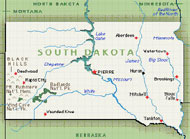| 1.0 | TRAVEL AND TRAFFIC MANAGEMENT |
| 1.6 | TRAFFIC CONTROL |
| 1.6.2 | TC shall include a Traffic Surveillance function. |
| 1.6.2.1 | Traffic Surveillance shall include a vehicle detection function with the capability of accurately detecting vehicles in a real-time fashion. |
| 1.6.2.1.1 | Vehicle detection shall include the capability to determine those vehicles that are HOVs. |
| 1.6.2.2 | Traffic Surveillance shall include a data collect function to provide the capability to collect data for determining traffic flow and prediction. |
| 1.6.2.2.1 | The data collect function shall provide the capability to quickly feedback traffic data to the control processes. |
| 1.6.2.3 | Traffic Surveillance shall include a wide-area surveillance capability to include several jurisdictions. |
| 1.6.2.3.1 | The wide-area surveillance shall gather speed and flow information. |
| 1.6.2.4 | TC shall provide the capability to acquire detailed traffic measurements at specific locations. |
| 1.7 | INCIDENT MANAGEMENT |
| 1.7.1 | Incident Management shall provide an Incident Identification function to identify incidents. |
| 1.7.1.1 | The Incident Identification function shall include the capability to identify predicted incidents. |
| 1.7.1.1.1 | The Incident Identification function shall use information from the following types of sources, where available, to identify predicted incidents: |
| 1.7.1.1.1(a) | Traffic flow sensors. |
| 1.8 | TRAVEL DEMAND MANAGEMENT |
| 1.8.0 | ITS shall include a Travel Demand Management (TDM) function. Travel Demand Management will generate and communicate management and control strategies that will support and facilitate the implementation of TDM programs, policies and regulations. It consists of two major functions, which are, (1) Increase Efficiency of Transportation System and (2) Provide Wide Variety of Mobility Options. |
| 1.8.3 | TDM shall include a sensors/control function. |
| 1.8.3.1 | The sensors/control function shall provide the capability to gather information needed for the generation of management and control strategies to include, but not be limited to the, following: |
| 1.8.3.1(b) | Usage levels. |
| 8.0 | MAINTENANCE AND CONSTRUCTION MANAGEMENT |
| 8.1 | MAINTENANCE AND CONSTRUCTION OPERATIONS |
| 8.1.3 | Maintenance and Construction Operations shall provide a Work Zone Management and Safety (WZMS) function, which provides support for the effectiveness, safety, and efficiency of roadway operations during all work zone activities. This function includes interactions among Traffic Managers, Supervisors, Dispatchers, Field Crews, Construction Crews, Public Safety Organizations, Information Service Providers, and Travelers. |
| 8.1.3.1 | WZMS shall monitor, control, and direct activity in the vicinity of work zones. |
| 8.1.3.1.3 | WZMS shall be able to divert vehicles around work zones via automated lane changing techniques. |
| 8.1.3.1.3.1 | WZMS shall collect information used to support automated lane changing, including but not limited to: |
| 8.1.3.1.3.1(a) | Volume |
| 8.1.3.1.3.1(b) | Occupancy |
| 8.1.3.1.3.1(c) | Speed |
| 8.1.3.1.3.1(d) | Headways |
| 8.1.3.1.3.1(e) | Vehicle characteristics |
| 8.1.3.1.3.1(f) | Merging distance |
| | |












